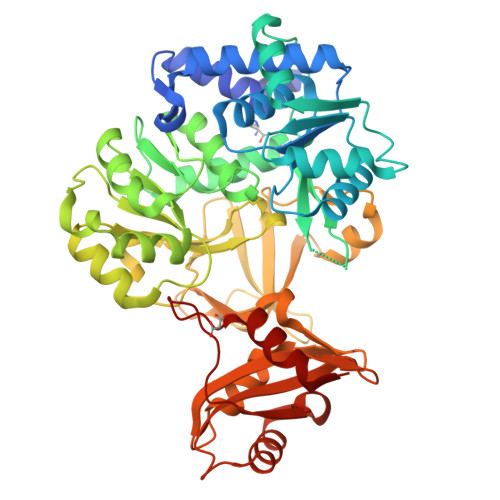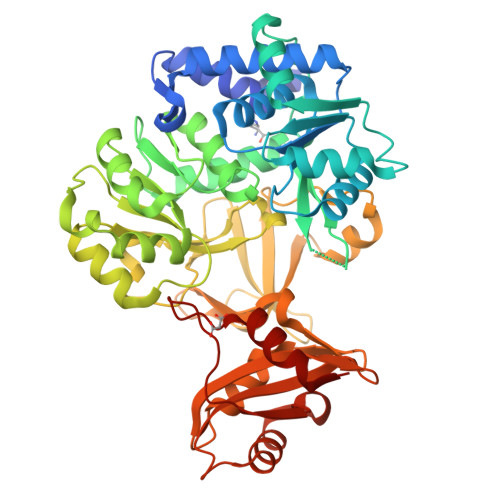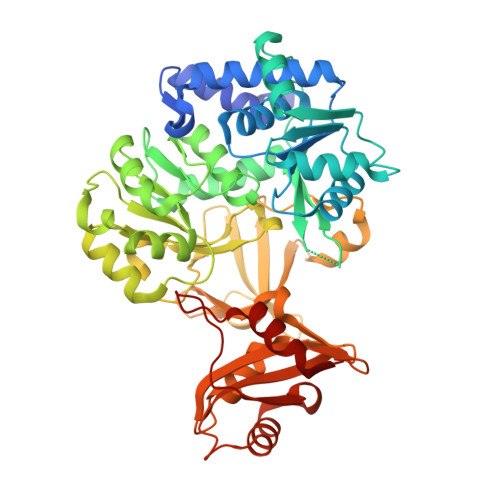The Mycobacterium tuberculosis Very-Long-Chain Fatty Acyl-CoA Synthetase: Structural Basis for Housing Lipid Substrates Longer than the Enzyme.
Andersson, C.S., Lundgren, C.A., Magnusdottir, A., Ge, C., Wieslander, A., Martinez Molina, D., Hogbom, M.(2012) Structure 20: 1062-1070
- PubMed: 22560731
- DOI: https://doi.org/10.1016/j.str.2012.03.012
- Primary Citation of Related Structures:
3R44 - PubMed Abstract:
The Mycobacterium tuberculosis acid-induced operon MymA encodes the fatty acyl-CoA synthetase FadD13 and is essential for virulence and intracellular growth of the pathogen. Fatty acyl-CoA synthetases activate lipids before entering into the metabolic pathways and are also involved in transmembrane lipid transport. Unlike soluble fatty acyl-CoA synthetases, but like the mammalian integral-membrane very-long-chain acyl-CoA synthetases, FadD13 accepts lipid substrates up to the maximum length tested (C(26)). Here, we show that FadD13 is a peripheral membrane protein. The structure and mutational studies reveal an arginine- and aromatic-rich surface patch as the site for membrane interaction. The protein accommodates a hydrophobic tunnel that extends from the active site toward the positive patch and is sealed by an arginine-rich lid-loop at the protein surface. Based on this and previous data, we propose a structural basis for accommodation of lipid substrates longer than the enzyme and transmembrane lipid transport by vectorial CoA-esterification.
Organizational Affiliation:
Stockholm Center for Biomembrane Research, Department of Biochemistry and Biophysics, Stockholm University, Arrhenius Laboratories for Natural Sciences C4, SE-10691 Stockholm, Sweden.




















